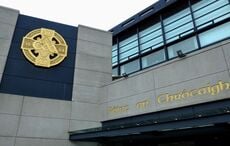This year marks the centenary of the Dublin Lockout, one of the greatest labor disputes in Irish history. For several months, thousands of workers across Dublin went on strike for better employment terms.
William Martin Murphy owned the Dublin United Tramway Company (DUTC), in addition to the city’s biggest newspaper and the largest department store and hotel. Murphy demanded that all members of the DUTC forswear membership in Jim Larkin’s Irish Transport and General Worker’s Union (ITGWU) or be fired. Larkin responded by calling on members to walk away on August 26, 1913. Murphy locked them out and Larkin started a wave of strikes affecting other industries under Murphey’s ownership. By September, 20,000 employees and their 80,000 dependants were involved in the strike.
To mark the centenary of the lockout, a new plaque was unveiled at Liberty Hall to honor the Irish Women Worker’s Union (IWWU) on International Women’s Day, March 8, 2013. Founded by Larkin’s sister Delia Larkin, with help from Countess Markievicz, the IWWU worked for better pay for members employed by Jacob’s Biscuit Factory and organized food distribution and soup kitchens during the lockout. Feminist historian Margaret MacCurtain unveiled the new plaque with the union’s last serving General Secretary Padraigin Ni Mhurchu and IWWU member Kay Marron.
While the IWWU were helping feed the union members, American trade unionist Big Bill Haywood visited Dublin during the lockout. He advocated creating one union for workers across industries and was a founding member of the Industrial Workers of the World (IWW). Haywood was a controversial figure because of his promotion of radical tactics. During his visit, Haywood inspected what later became the Irish Citizen Army with James Connolly who was executed for his leadership role in the 1916 Easter Rising. The army had been formed to teach men to defend themselves in combat with police and to fight the demoralising influence of unemployment.
Dublin history blog “Come Here to Me!” reprinted Haywood’s account from his autobiography “Bill Haywood’s Book: The Autobiography of Big Bill Haywood,” “There was a splendid meeting of the strikers in front of Liberty Hall. A cordon of police had been formed on one side. In the course of my speech I referred to the then recent strikes in America and told what the workers could do with solidarity among themselves. I described how the workers booed the police and asked the Irish workers to try it with me once, saying: ‘Now altogether, as loud as you can: Boo, boo, boo!’ It was but a few minutes afterwards that the police formed in ranks and marched away.”
However, not events surrounding the lockout were so peaceful. On August 31 police officers rushed on a crowd in O’Connell Street listening to Jim Larkin speak about the lockout. The police riot resulted in injuries and two deaths, laborers James Nolan and John Byrne.
“Come Here to Me!” quoted John Dorney from his book “The Irish Story,” “Most of those injured were not in fact trade unionists, who were at a rally elsewhere in the city, but mere bystanders- showing how indiscriminate the police action was. Several hundred people were injured and there was ferocious rioting all over working class districts of Dublin and the police. In the labour tradition, this is ‘their own’ Bloody Sunday.”
The lockout ended in January of 1914. Without the resources for a longer strike, workers slowly returned to their jobs on employers’ terms. In October of that year Larkin left Ireland for the United States. Although the strike had failed in winning better terms for the workers, the lockout was a powerful demonstration of the potential of the mobilized workforce.




Comments